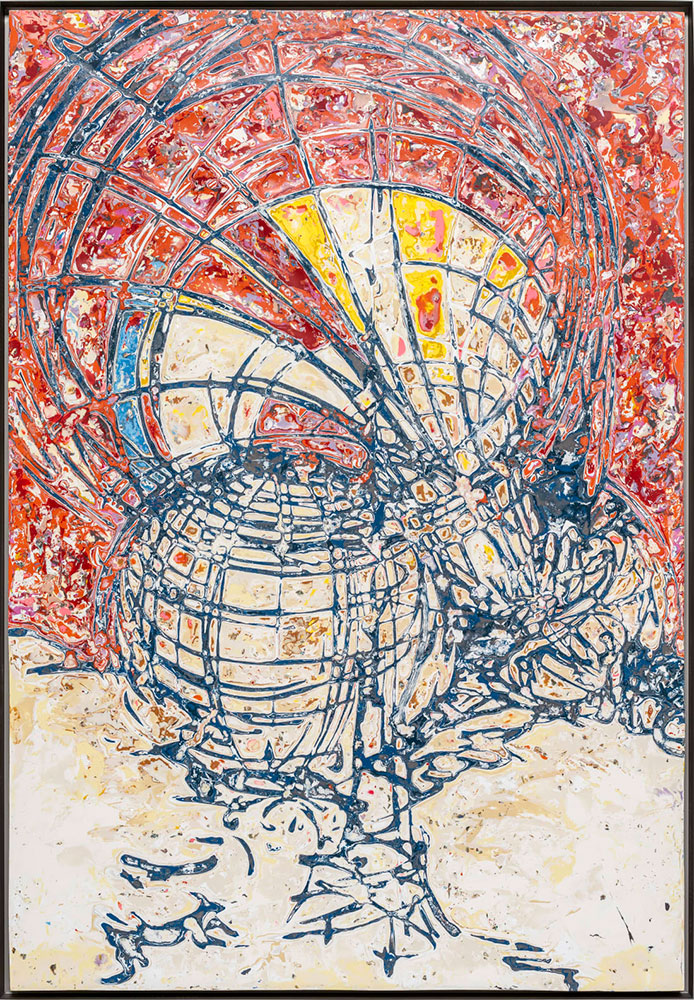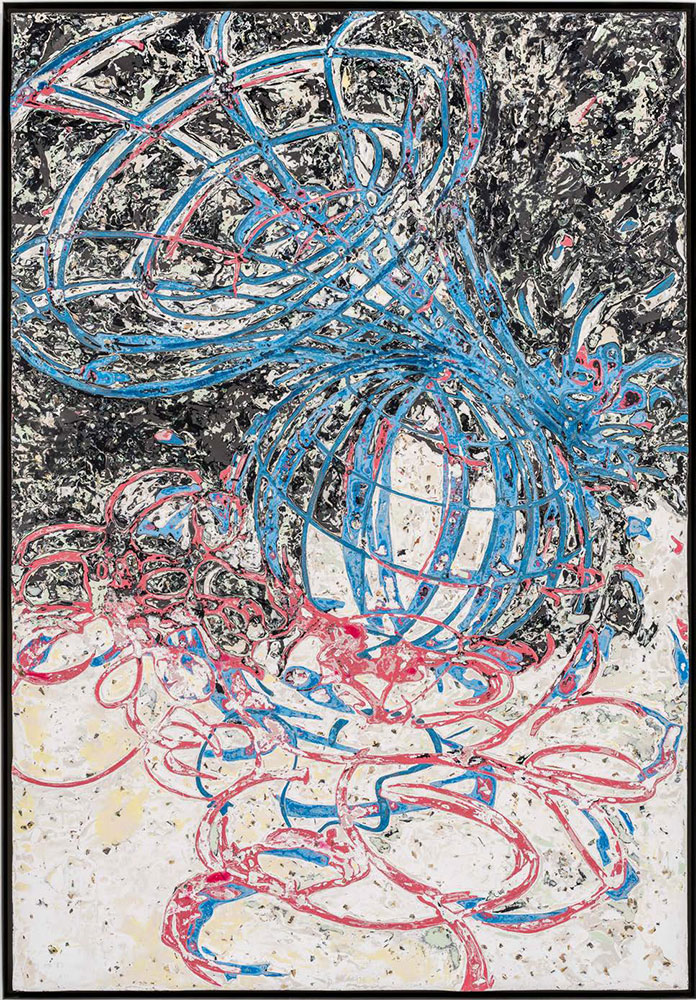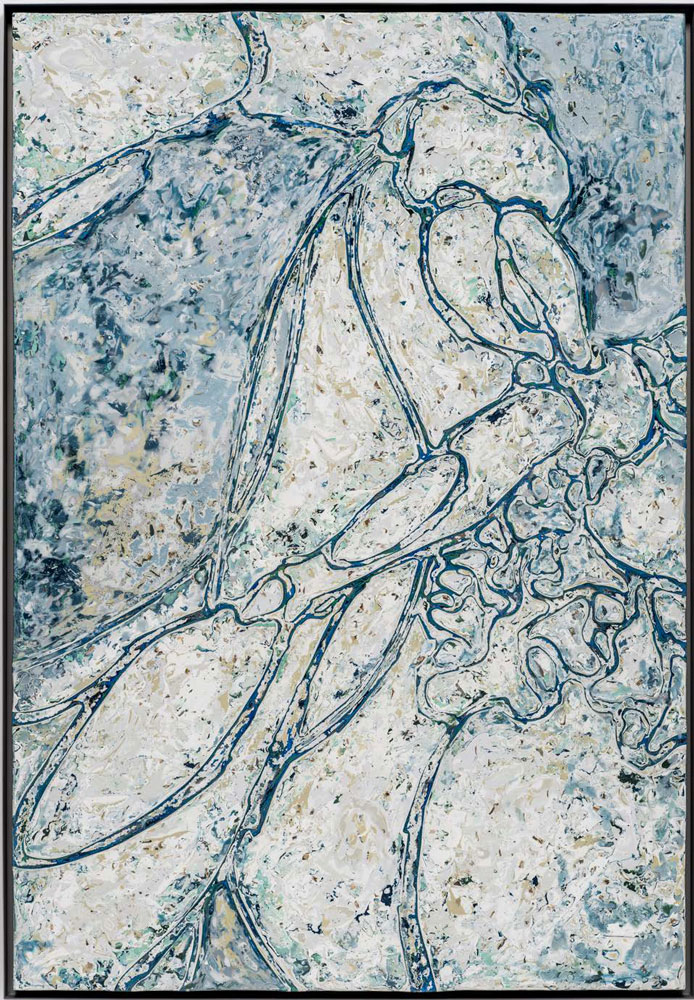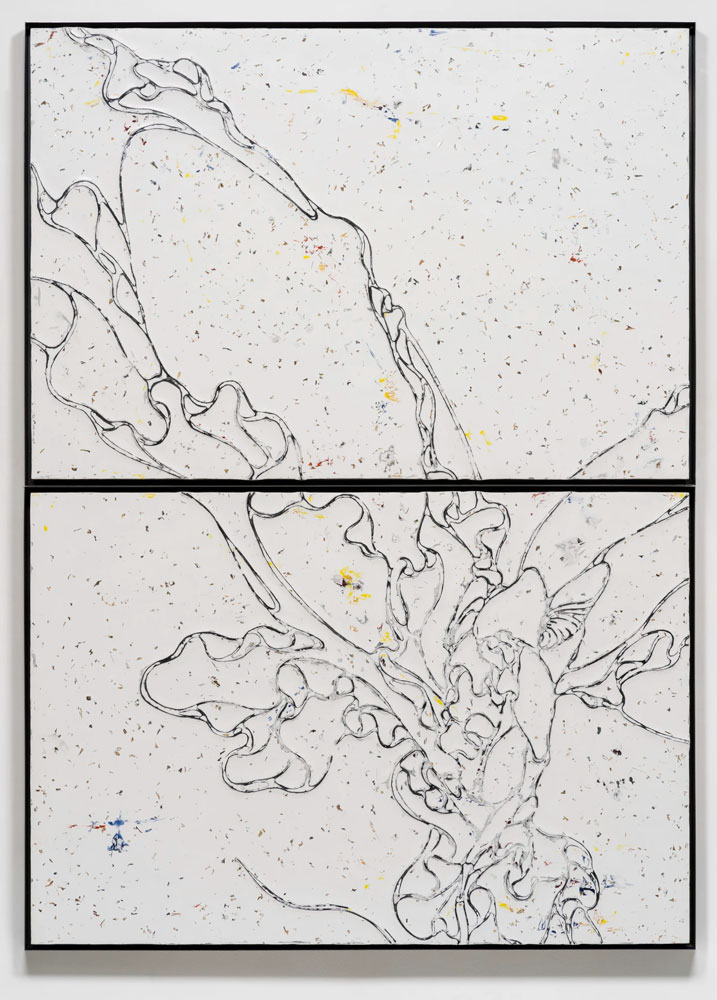ART CITIES: London-Lee Bul
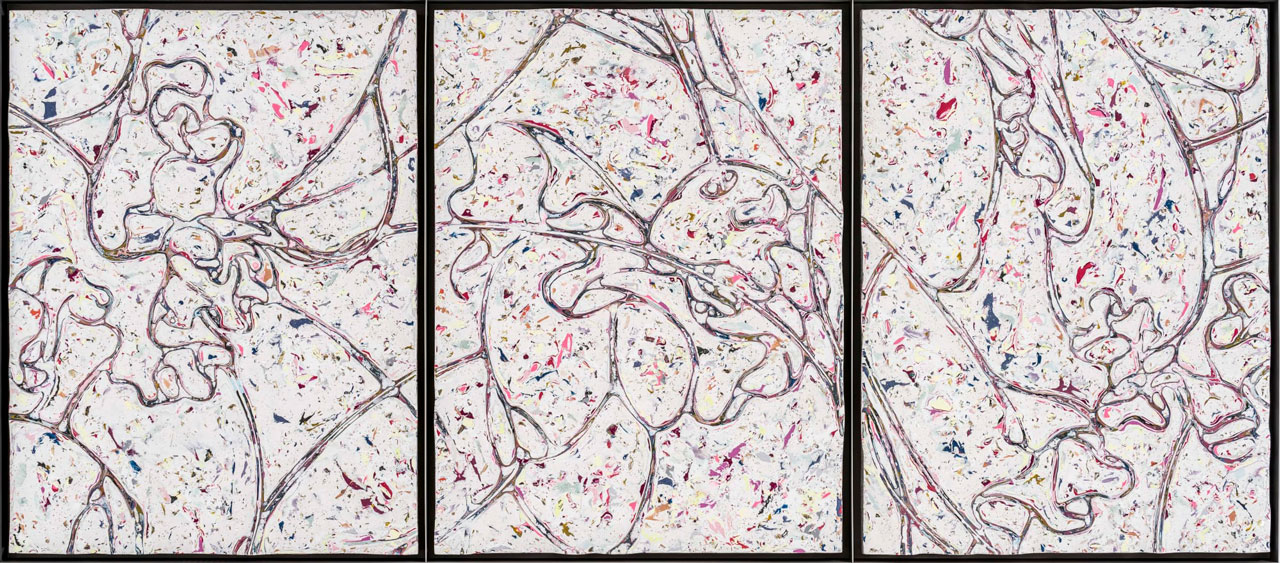 Lee Bul is considered one of the foremost women artists from Asia to emerge in the international art scene in the 1990s. Her artistic practice represents humanity’s desire for a utopian existence. It’s a desire that is doomed to failure, but it is still driven by humankind’s wanton need for the realization of impossible dreams.
Lee Bul is considered one of the foremost women artists from Asia to emerge in the international art scene in the 1990s. Her artistic practice represents humanity’s desire for a utopian existence. It’s a desire that is doomed to failure, but it is still driven by humankind’s wanton need for the realization of impossible dreams.
By Dimitris Lempesis
Photo: Thaddaeus Ropac Gallery Archive
Lee Bul in her solo exhibition presents works from the Perdu series for the first time in the UK, including new works created especially for the show. Conceived as single and multi-panel works, these sumptuous mother-of-pearland acrylic paintings exemplify the artist’s practice by bringing together past, present and future temporalities through the materials and references they incorporate. The exhibition marks the artist’s first solo presentation in the UK since her landmark retrospective “Crashing” at the Hayward Gallery, London in 2018. Lee Bul blends traditional methods and materials with a futuristic aesthetic, exploring the notion of utopia and its imaginative potential to reveal its darker undertones. Born in 1964 to left-wing dissident parents under South Korea’s military dictatorship, she draws on her childhood experiences, as well as European and South Korean culture, to create works that resonate across time and history, warning of the dangers of humanity’s perpetual yearning for an ideal society. The title of the works alludes to the French writer Marcel Proust’s novel “À la Recherche du Temps Perdu” (In Search of Lost Time; 1913–1927), evoking universal themes of memory and nostalgia. At the same time, ‘perdu’ is an arcane military idiom used to describe a sentinel assigned to a particularly remote and dangerous location and might be read in the context of the ongoing conflict between North and South Korea. The process of making each work in her “Perdu” series takes Lee Bul two months. One after the other, the artist superimposes various shades of acrylic paint mixed with stone powder and waits for them to dry, before sanding down the surface strategically to create a marbled effect. The well-defined lines of the underlying drawing are preserved with a laser-cut foam structure until the base of the work is ready, after which Lee Bul fills in the lines, repeating the layering process with contrasting colors. Among the paint, she mixes flecks of mother of pearl, which give the surface a glittering effect as they catch the surrounding light. Throughout her practice, the artist looks for references and materials that embody contradiction. Mother of pearl, in particular, interests her because it is ‘related to organisms that come from the inside out.’ Despite its hard appearance, the substance is found on the inside of shellfish, which produce it to repair wounds. That such a beautiful material might be a result of pain gives it a power and a poignancy that underlies all of Lee Bul’s delicate works. On a formal level, the Perdu works are related to the “Cyborg” sculptures and subsequent “Anagram” series the artist began creating in the late 1990s. Lee Bul’s vibrant paintings are inhabited by part-organic, part-mechanical anthropomorphic creatures. Appearing as though in motion, they allow the viewer to contemplate the human fascination with technological progress and related anxieties that surround the search for perfection. Throughout her practice, which spans three decades, the artist looks for references and materials that embody contradiction. “I choose what I work with very carefully”, states Lee Bul, “everything has connotations, stories and I utilise them”. Mother of pearl, found on the inside of some shellfish, interests her because it ‘is related to organisms that come from the inside out’ – the organic/inorganic composite material is solid in appearance, yet is able to produce an iridescent substance to repair damage made to the shell. This dualism is central to Lee Bul’s critique of utopia, the ultimate failure of which she sees as inherent to the notion itself. “For me, utopia in its paradoxical essence is a nostalgic, even elegiac, idea”, she explains. This ambivalence is carried throughout her oeuvre, which seems suspended in time and space, somewhere between a dream, reality and nightmare. By confronting viewers with the shortcomings of idealism and the human condition, it is this underlying darkness that gives the Perdu works their poignancy and power.
Photo: Lee Bul, Perdu CXXII, 2021, Mother of pearl, acrylic paint on wooden base panel, stainless steel frame, 83.3 x 189.5 x 6.6 cm (32.8 x 74.61 x 2.6 in), © Lee Bul. Photo: Jeon Byung-cheol, Courtesy the artist and Thaddaeus Ropac Gallery
Info: Thaddaeus Ropac Gallery, London Ely House, 37 Dover Street, London, United Kingdom, Duration: 30/3-16/5/2023, Days & Hours: Tue-Sat 10:00-18:00, https://ropac.net/
